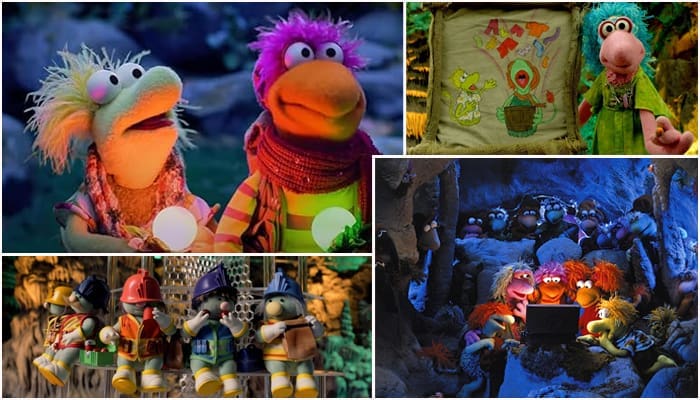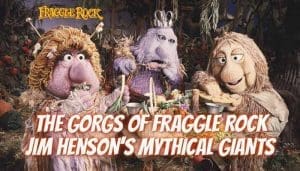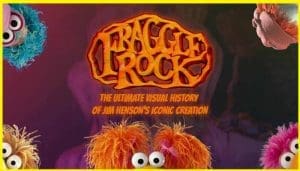Step into a world beneath our own, a vibrant network of caves teeming with music, laughter, and radish-fueled adventures. This is Fraggle Rock, the beloved creation of visionary puppeteer Jim Henson, a place that has captured hearts since its debut in 1983 and continues to enchant audiences through reboots and enduring fandom. Home to the colorful, carefree Fraggles, this subterranean realm is more than just a setting for puppet antics; it’s a complex ecosystem of interconnected societies, each with its own perspective. Jim Henson envisioned Fraggle Rock not merely as entertainment, but as a vehicle to promote world peace, international understanding, and an appreciation for the delicate balance of life. This exploration delves into the rich tapestry of Fraggle lore, examines their unique beliefs and worldview, unpacks their fascinating egalitarian society – notably lacking a traditional hierarchy – introduces pivotal figures like the wise Marjory the Trash Heap and the intrepid Traveling Matt, and celebrates the vibrant culture that makes Fraggle Rock an enduring source of joy and wonder.
The Fraggle Universe: Worldview and Core Beliefs
The Fraggles possess a distinct understanding of their place in the universe, shaped by their immediate surroundings, their interactions with other species, and glimpses into the world beyond their caves. Their worldview is fundamentally relational, emphasizing interconnectedness, joy, and a healthy dose of playful curiosity.
Inside the Rock: Understanding Their World (Fraggle Rock, Gorgs’ Garden, Doozers)
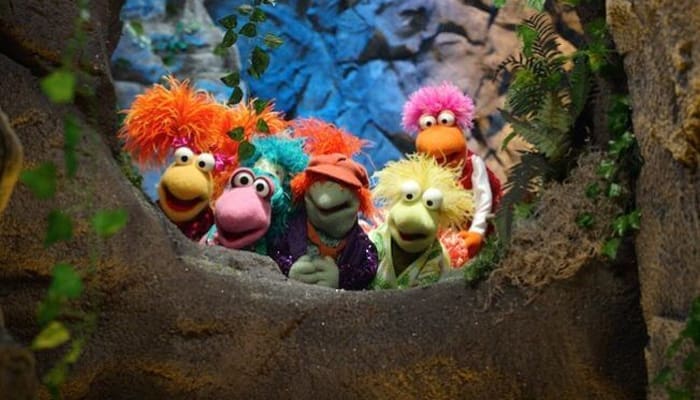
For a Fraggle, home is Fraggle Rock – a sprawling system of natural caves filled with diverse life and geological features. This environment is perceived as the very center of the universe, a belief voiced by the adventurous Uncle Traveling Matt. Their existence within the Rock is defined significantly by their interactions with the other inhabitants.
Adjacent to their caves lies the Gorgs’ Garden, ruled by large, furry, and often grumpy creatures who view Fraggles primarily as pests. For the Fraggles, however, the garden is an essential resource, the primary source of the radishes that form a staple of their diet. These radish raids are a constant source of conflict, particularly with the Gorgs’ lumbering son, Junior, who often tries to capture the swift-moving Fraggles.
Living alongside the Fraggles, often literally beneath their feet, are the Doozers. These small, green, industrious beings dedicate their lives to building intricate scaffolding throughout Fraggle Rock using miniature construction equipment. Their constructions are made from an edible, candy-like substance derived from radishes – Doozer sticks. Fraggles delight in eating these structures, which constitutes the main interaction between the two species. Initially, this might seem exploitative, a view explored when the thoughtful Mokey Fraggle convinces her friends to stop eating the constructions out of sensitivity. However, this leads to an overabundance of Doozer buildings, revealing a crucial aspect of their relationship: Doozers want their structures eaten. They build for the joy of building, and the Fraggles consuming their work creates space for new projects. As the Doozers themselves state, “architecture is meant to be enjoyed”. This creates a deeply symbiotic relationship, though not one built on mutual admiration; Doozers generally consider the fun-loving Fraggles to be frivolous and lacking purpose. This complex dynamic, where needs align despite differing values and perspectives, defines the Fraggles’ immediate universe. Their understanding of “home” is inseparable from these dependencies and interactions, reflecting the show’s core message about the interconnectedness of all living things.
Beyond the Walls: Views on “Outer Space” and “Silly Creatures”
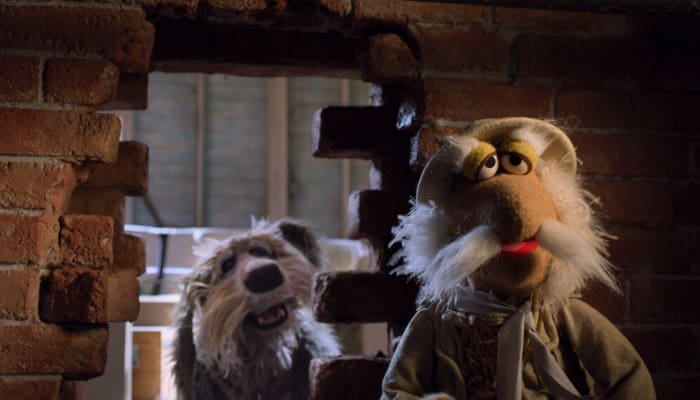
The Fraggle understanding of the world extends beyond the Rock and the Garden to a mysterious realm they call “Outer Space”. This is, in fact, the human world, accessed through a small hole in the wall of what is typically an inventor’s workshop (helmed by Doc and his dog Sprocket in the North American version) or, in other international iterations, a lighthouse or a bakery.
The primary source of information about Outer Space comes from Gobo Fraggle’s Uncle Traveling Matt. Driven by an insatiable curiosity, Matt bravely ventured through the hole to become the first Fraggle explorer of the human world, sending back postcards detailing his observations. Fraggles refer to humans as “Silly Creatures,” a term born from Matt’s often comical misinterpretations of human behavior, technology, and culture reported in his postcards. He might describe cars as strange beasts or mistake everyday objects for items of great ritual significance. This perspective, filtered through Matt’s Fraggle sensibilities, offers a humorous yet insightful commentary on human life. It functions almost like Plato’s Allegory of the Cave, where the Fraggles receive only mediated “shadows” of the human world via Matt’s reports, leading to an incomplete but fascinating understanding. These explorations, while comedic, serve a deeper narrative purpose. By presenting the familiar human world through the naive and often confused eyes of Traveling Matt, the show gently encourages viewers to see their own routines and societal norms from a different angle, fostering the cross-cultural understanding and tolerance Henson aimed to promote.
The Ties That Bind: Interconnectedness and Joy
At the heart of the Fraggle belief system lie the core values of joy, play, community, and an intrinsic understanding of interconnectedness. Fraggles live a generally carefree life, dedicating significant time to games, songs, exploration, and simply enjoying each other’s company. This emphasis on joy is not merely hedonistic; it’s deeply woven into their communal spirit.
Underlying their playful existence is the fundamental theme that everything is connected. The Fraggles, Doozers, and Gorgs, despite their differences and conflicts, are part of a single ecosystem, dependent on each other for survival, even if they don’t always realize it. The Doozers need the Fraggles to eat their constructions, and the Fraggles (and Doozers, for their building material) need the radishes from the Gorgs’ garden. Episodes like “The Great Radish Famine,” where Marjory the Trash Heap hides the radishes to force cooperation, explicitly demonstrate this interdependence. This reflects Jim Henson’s explicit goal for the show: to illustrate ecological balance and promote harmony by showing how different groups rely on one another. The Fraggle focus on joy and their necessary interactions, therefore, form a worldview where individual happiness is sustained by, and ideally contributes to, the balance of the whole, reflecting a profound, albeit simply presented, ecological consciousness.
A Society Without Bosses: Fraggle Hierarchy and Social Dynamics
One of the most distinctive aspects of Fraggle life is their social structure, or perhaps more accurately, their lack thereof in the traditional sense. They operate under principles that challenge conventional notions of leadership and work.
“We Each Lead Ourselves”: The Egalitarian Fraggle Way
Fraggle Rock is fundamentally an egalitarian society, devoid of formal bosses, rigid power structures, or codified laws. This is explicitly articulated by Wembley Fraggle: “Fraggles don’t have any bosses […] We each lead ourselves and we all lead each other”. This ethos isn’t merely an absence of structure but an active principle of self-governance and mutual leadership, rooted in their history (legend tells of a Fraggle named Blundig who advocated for this approach).
This lack of hierarchy permeates daily life. Decisions seem to arise from consensus or individual initiative guided by community norms rather than top-down directives. This philosophy extends to social roles as well, with a noticeable flexibility around traditional gender expectations. Characters like the athletic and assertive Red, the domestic-leaning and cautious Boober, or the indecisive yet emotionally open Wembley demonstrate that Fraggles are accepted for their individual traits regardless of gender norms. This reflects the “gentle anarchist” spirit attributed to creator Jim Henson, presenting an alternative societal model based on individual responsibility within a supportive collective.
Work is Play: The 30-Minute Work Week
Further reinforcing their unique societal values is the Fraggle approach to work. They operate on a remarkably short “thirty-minute work week”. Jobs, which include essential tasks like gathering radishes, collecting Traveling Matt’s postcards, doing laundry, exploring, or serving in the volunteer fire department, are generally viewed not as drudgery but as “enriching” and enjoyable parts of life. Fraggles are encouraged to choose jobs they like, and the dedication to these tasks, however brief, is genuine. The artistic Mokey Fraggle exemplifies this attitude, stating she sometimes puts in “two, maybe three minutes of overtime, just for fun”.
This perspective stands in stark contrast to the industrious Doozers, whose lives are dedicated to constant work and construction. The Fraggle model radically redefines work’s purpose, shifting it away from obligation towards personal fulfillment and contribution that is seamlessly integrated with their primary focus on play and joy. This short work week is not just a whimsical detail; it’s a foundational element of their society that enables and sustains their core values, representing a deliberate alternative to more labor-intensive ways of living.
Building and Munching: The Fraggle-Doozer Connection
The relationship between Fraggles and Doozers provides a fascinating case study in interdependence within this unique society. As established, Doozers tirelessly build elaborate structures using edible Doozer sticks, and Fraggles consume these structures as a food source. The critical insight is the Doozers’ desire for their creations to be eaten, allowing them to continue their beloved work of building.
Despite this fundamental co-dependence, the relationship is complex. Doozers often view the Fraggles’ carefree lifestyle with a degree of disdain, considering them frivolous. Fraggles, conversely, may not always grasp the Doozers’ perspective, as seen when Mokey initially tried to protect Doozer constructions. Yet, the symbiosis works. This dynamic demonstrates that interdependence doesn’t necessarily require shared values or mutual admiration. It highlights a nuanced form of coexistence where differing motivations and opinions don’t preclude a mutually beneficial relationship, serving as a microcosm of the show’s broader ecological themes of connection and balance. Specific Doozers, like the rebellious young Cotterpin who befriends Red Fraggle, or the wise Architect Doozer, add further layers to this interaction, showing diversity even within the seemingly monolithic Doozer culture.
Guiding Lights: Influential Figures in Fraggle Rock
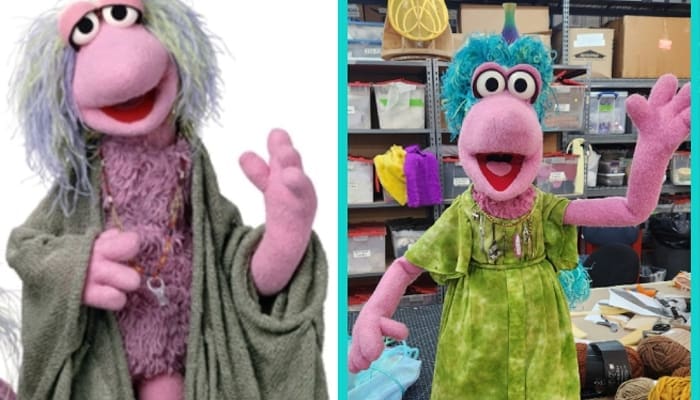
While lacking formal leaders, Fraggle society benefits from the wisdom, experience, and unique perspectives of several key figures who serve as guides, inspirations, and upholders of tradition.
Marjory the Trash Heap: Oracle of Wisdom
Perhaps the most enigmatic and revered figure is Marjory the Trash Heap. Residing in a corner of the Gorgs’ garden, Marjory is quite literally a large, matronly, sentient compost heap, composed of discarded items like leaves, peels, and rinds. Accompanied by her two rat-like heralds, Philo and Gunge, Marjory is considered the Fraggle Rock oracle. The Fraggles believe she “knows all and sees all,” possessing ultimate Fraggle wisdom.
They frequently seek her counsel when faced with problems or confusion. Marjory’s advice often encourages introspection and trusting one’s instincts (“Relax. Go with the flow. Go with your nose.”). She embodies resilience, demonstrating how value and wisdom can emerge from the most unexpected, even discarded, places. Her famous line, “I’m orange peels. I’m coffee grounds. I’m wisdom,” encapsulates this philosophy. Her wisdom is often intuitive and organic, contrasting with the more deliberate, riddle-based guidance offered by other figures like Cantus the Minstrel. Marjory represents a challenge to conventional notions of value and authority, suggesting that answers can often be found within oneself or the immediate, seemingly mundane environment, rather than through external dogma. Her enduring presence, even in the recent reboot series where she helps Boober find a cure within her pile, confirms her iconic status.
Uncle Traveling Matt: Intrepid Explorer
Traveling Matt serves as the Fraggles’ window to the wider universe, embodying the spirit of exploration. As Gobo’s uncle, he was the first Fraggle known to venture into Outer Space, the human world. His ongoing mission is to observe the Silly Creatures (humans) and send postcards back to Gobo detailing his findings.
Matt’s observations are notoriously, and hilariously, flawed due to his complete lack of context for human culture and technology. His postcards provide much of the show’s humor as he misinterprets everyday objects and activities. His name itself is an industry in-joke, referencing the “traveling matte” special effects technique used to place him in footage of the human world. Despite his comical ineptitude, Matt is a figure of inspiration, particularly for Gobo, fueling his own desire for adventure. Matt represents the crucial, if sometimes shaky, bridge between the Fraggle and human worlds, facilitating cross-cultural observation and embodying the innate Fraggle drive to explore the unknown.
The World’s Oldest Fraggle & Ceremonial Roles
While Fraggles lack a king or president, certain individuals hold specific roles tied to tradition and communal activities. The World’s Oldest Fraggle is one such figure, primarily associated with overseeing ceremonies. He leads events like the Ceremony of the Moon and declares the start of Ruler of the Rock Day based on “a feeling in his bones”.
Other Fraggles step into specific functions as needed. Cantus the Minstrel leads the crucial Festival of the Bells. The Storyteller Fraggle manages the selection process for the Glory Song. Even task-oriented groups like the Fraggle Rock Volunteer Fire Department have designated roles like a Firechief and a Clerk for organizational purposes. The existence of these roles demonstrates that while Fraggle society is egalitarian, it utilizes specific figures to uphold traditions and guide communal activities. These roles appear situational or ceremonial, focused on specific functions rather than conferring broad, permanent power, thus reinforcing the overall non-hierarchical structure while acknowledging the need for organization during important cultural moments.
The Rhythm of the Rock: Fraggle Culture, Songs, and Ceremonies
Fraggle culture is a vibrant tapestry woven from threads of music, celebration, shared rituals, and a deep connection to their world and each other. It’s a culture that actively promotes joy, understanding, and communal participation.
Let the Music Play: The Importance of Song and Dance
Music is not merely entertainment in Fraggle Rock; it is the lifeblood of their culture. Songs and dances permeate every aspect of Fraggle life, used for celebration, expressing complex emotions, telling stories, working through problems, and simply sharing joy. The show features hundreds of original songs spanning various genres, from the iconic opening theme “Dance Your Cares Away” urging listeners to let the music play, to heartfelt duets like “The Friendship Song” sung during moments of peril, to upbeat numbers like “Dixie Wailin'” used as a clever distraction.
Traveling musicians known as the Minstrels, led by the wise and enigmatic Cantus (one of the few characters puppeteered by Jim Henson himself), embody the belief that music exists in all things, as expressed in their introductory tune, “Let Me Be Your Song”. The sheer prevalence of music leads to fan questions about how all Fraggles seem to know the lyrics and dances spontaneously; the likely answer lies in deep cultural immersion from a young age. Music serves as a fundamental language, a primary tool for communication, emotional regulation, social cohesion, and the transmission of cultural values, making it inseparable from the Fraggle identity.
Marking Time: Fraggle Festivals and Traditions
In the absence of rigid rules or calendars, Fraggle life finds rhythm and structure through a variety of festivals, ceremonies, and traditions that reinforce their core values and community bonds. These shared rituals provide regular opportunities for celebration, reflection, and reaffirming their connection to each other and their world.
Key ceremonies include:
- Joke Day: A celebration of silliness where Fraggles don costumes and tell jokes, led by an appointed joke-master.
- The Ceremony of the Moon: A monthly festival honoring the Fraggle Moon’s reflection in the Fraggle Pond, led by the World’s Oldest Fraggle and featuring a designated Moon Greeter.
- Ruler of the Rock Day: A special day declared by the World’s Oldest Fraggle, where the Finger of Light chooses a temporary ruler to issue commands for the good of all, often ending in playful contests.
- The Glory Song Ceremony: A periodic event where one Fraggle is chosen by the Storyteller to write a song honoring their generation’s life in the Rock.
- Trophy Day: A day for celebrating individual achievements, big or small, by choosing personal trophies.
- The Festival of the Bells: A crucial winter solstice celebration led by Cantus, where all Fraggles ring bells together to awaken the Great Bell at the heart of the Rock, ensuring its continued vitality. This involves songs, gift-giving, and traditional dances.
Beyond these major events, traditions like sharing dreams by touching heads before sleep further cement their communal bonds. These cultural events act as the ‘soft structure’ of Fraggle society, providing shared purpose and reinforcing values like joy, community, nature appreciation, and unity in the absence of formal governance.
Table: Key Fraggle Ceremonies and Festivals
| Ceremony Name | Key Activities/Description | Core Values Reflected |
|---|---|---|
| Joke Day | Dressing in costumes, telling jokes, traditional knock-knock joke medley led by one Fraggle. | Silliness, Joy, Laughter, Community Participation |
| Ceremony of the Moon | Monthly festival, welcoming song & processional led by World’s Oldest Fraggle, Moon Greeter welcomes moon at Fraggle Pond (poetry/sculpture). | Connection to Nature, Appreciation of Beauty, Tradition |
| Ruler of the Rock Day | Declared by World’s Oldest Fraggle, Finger of Light chooses ruler for a day to issue 3 commands, ends with pickle-balancing contest. | Responsibility, Community Improvement, Understanding, Play |
| Glory Song Ceremony | Storyteller chooses one Fraggle via Gourd of Guidance to write a song honoring their generation’s life in Fraggle Rock. | Music, Storytelling, Honoring History, Community Identity |
| Trophy Day | Overseen by Mokey, Fraggles celebrate achievements by choosing trophies for themselves (recognizing deeds or qualities like friendship). | Recognition of Achievement, Appreciation, Friendship |
| Festival of the Bells | Winter solstice, led by Cantus, all Fraggles ring bells simultaneously to awaken Great Bell, songs, gift exchange, Weebabeast dance. | Unity, Collective Action, Interconnectedness, Tradition |
How Culture Shapes Fraggle Life
The elements discussed – the egalitarian social structure, the focus on joy and play integrated with work, the pervasive role of music and ceremony, the complex relationships with other species, and the guidance of key figures – all intertwine to create the unique fabric of Fraggle culture. This culture actively nurtures specific traits and values. The lack of hierarchy fosters individual expression and allows diverse personalities like the artistic Mokey, the cautious Boober, the energetic Red, and the indecisive Wembley to thrive without judgment based on rigid roles. The emphasis on exploration is embodied by Traveling Matt and inspires Gobo. The importance of wisdom is represented by Marjory the Trash Heap. Music and ceremony provide the essential social glue, reinforcing shared identity and values in a society without formal laws. Their interconnected worldview underpins the narrative drive towards harmony and understanding. Ultimately, Fraggle culture presents a holistic system where social organization, values, beliefs, and practices mutually reinforce each other, creating a society that prioritizes joy, community, understanding, and connection above all else.
Conclusion
Down in Fraggle Rock, Jim Henson crafted more than just a children’s television show; he built a world with its own intricate lore, deeply held beliefs, and a unique societal structure. The Fraggles, with their carefree, music-filled lives, embody a philosophy centered on joy, play, and interconnectedness. Their egalitarian society, free from bosses and rigid hierarchy, relies on self-governance and mutual leadership, challenging conventional norms. Their worldview encompasses the industrious Doozers, the imposing Gorgs, and the baffling “Silly Creatures” of Outer Space, all linked within a delicate ecosystem where actions have consequences.
Guidance comes not from rulers, but from figures like the wise oracle Marjory the Trash Heap, teaching resilience and the value of the overlooked, and the intrepid explorer Traveling Matt, bridging worlds and inspiring curiosity. Fraggle culture thrives on song, dance, and vibrant ceremonies like the Festival of the Bells, which reinforce community bonds and celebrate their connection to the Rock itself.
The enduring appeal of Fraggle Rock lies in these rich details and the timeless messages woven throughout its stories: the importance of tolerance, the necessity of understanding different perspectives, the power of joy and music, and the fundamental truth that all life is interconnected. Perhaps the Fraggles, in their simple, subterranean way, still have much to teach our own complex world about dancing our cares away and living in harmony. What lessons or memories from Fraggle Rock resonate most strongly with you?

